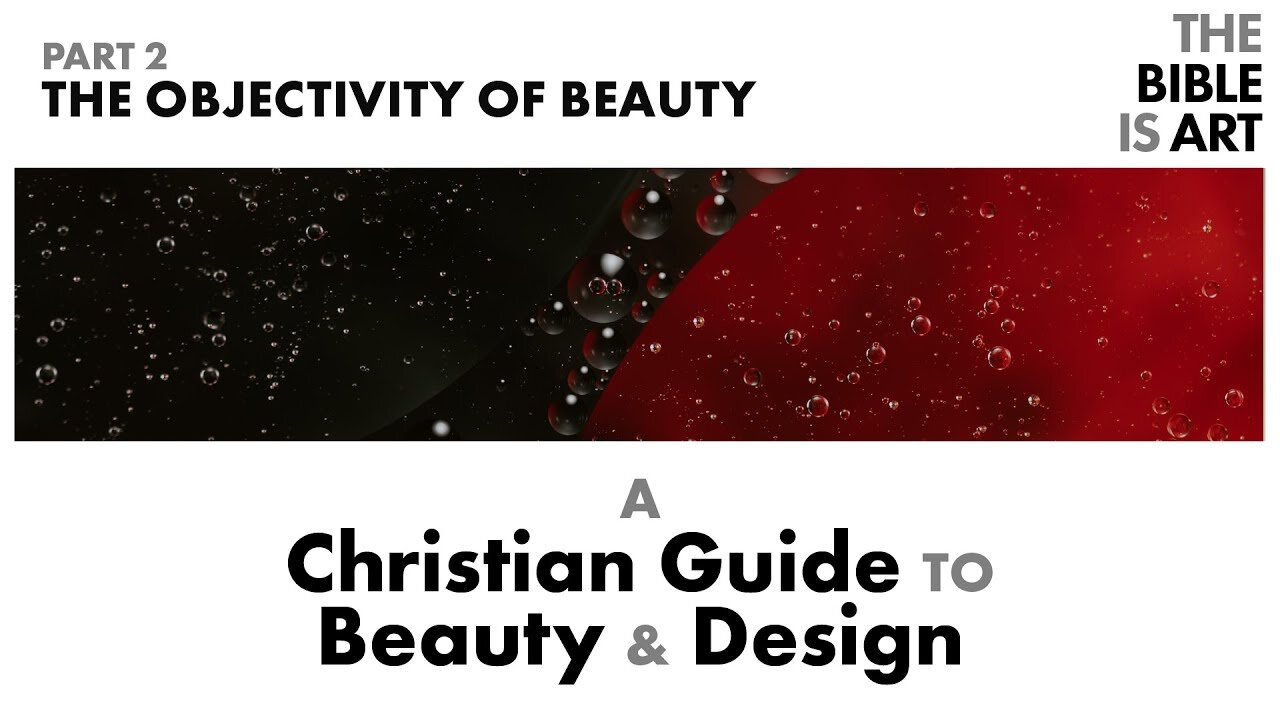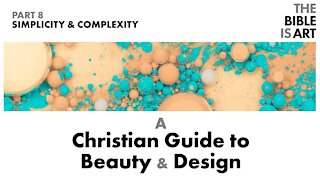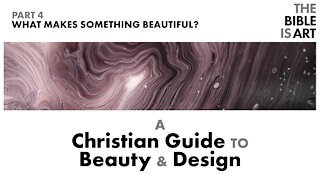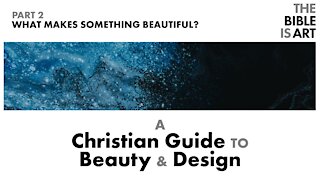Premium Only Content

The Objectivity of Beauty | A Christian Guide to Beauty and Design | Part 2
In this second video in the series A Christian Guide to Beauty & Design I talk about the objectivity of beauty.
Video 1 - Introduction (https://youtu.be/xDe5X6Yl-WI)
Support the Channel: https://www.patreon.com/thebibleisart
Website: https://www.thebibleisart.com
Email: thisdivineart@gmail.com
Twitter: @johnbhiggins
Images: Paweł Czerwiński (https://unsplash.com/@pawel_czerwinski)
| Transcription |
Welcome back to The Bible is Art. We are currently in a series where I bring you along with me as I write a book on a Christian Guide to Beauty and Design. This week we’re talking about the objectivity of beauty.
Beauty is objective. That is, when I say that poster or a painting is beautiful or well designed, I am saying something about the work, not something about how I feel about it. I’m not offering a preference. I am saying something about the work’s nature or essence, it’s structure and the relations between its parts. You certainly should feel a preference toward beautiful things, but that has nothing to do with whether it is or is not beautiful. Whether you have good feelings toward a well designed painting is predicated upon your aesthetic development, a topic I shall discuss later when we talk about the Fall and Aesthetic Discipleship.
No all this is confused by our language. When we point to a poster, a painting, or album cover and say that it’s “good” or “beautiful”, that could mean three things. First, it could mean that I am saying something objective about it, that it is well designed, that is, it has the properties of a beautiful design. Second, It could mean a subjective preference. That is, I am saying something about myself and my internal state that may or may not relate to objective features of the object. Or third, both. That is, I am saying that I do think the object is objectively well designed and I subjectively enjoy it.
Unfortunately, this linguistic confusion has caused a lot of confusion in aesthetics. It has contributed one more brick in the house of relativism. But there is no need to conclude that beauty is subjective because of an opaqueness in our language.
Let me pause here. While there are subjective aesthetic preferences (for instance, cultural or individual preferences for certain colors or patterns), this has no effect on the objectivity of beauty and its properties. Just as people have preferences for different types of food, there are foundational properties of what makes good food for humans. Arsenic, for example, would not be good food. But the existence or culinary preferences in no way affects the necessary properties to make something good food. Okay, back to the argument.
Beauty, good design is objective. It is a feature of objects and we know this for a number of reasons.
Intuition. Most people naturally believe that beauty exists and that when we identify something as beautiful we are saying something about that thing and not something about ourselves. And if that’s a natural intuition, we would need to have a really good reason to disbelieve.
Individual Practice. Every wife assumes that when you tell her she is beautiful that you are saying something about her, not you. And the same goes for the Grand Canyon, iPhones, and stories. And if this is our common practice, the way we live. And there is intelligence in our actions. And, once again, we only need to change our assumption if we have reasons to do so. And I don’t think we do.
Commercial Practice. When you read standard graphic design texts the rules for good design are universal and widely agreed upon. And when you work for a creative or ad agency these are the standards that are assumed. And when your work is critiqued by an art director, the unspoken assumption, the presuppositions are those universal, objective principles.
Cross Cultural Studies - There has been a whole spate of studies that demonstrate that there is cross-cultural agreement on the principles of beauty. Once again, there are still preference, but that does not preclude the existence of objective properties of beauty. For instance, symmetry is cross-culturally identified as an attribute of beautiful things. For instance, In 1995 in the Journal of Personality and Social Psychology, researchers did three studies on the cross cultural identification of facial attractiveness and found in all three studies there was a high correlation, that is there was consistency across cultures as to what was considered a beautiful face. Furthermore, they found that “Exposure to Western media did not influence attractiveness ratings in either study”. Dr. Gad Saad discussing cross-cultural aesthetic research states that “it is unequivocally clear that many [metrics of beauty] are universally defined, as these constitute cues of phenotypic quality that hold true irrespective of cultural setting or time period.”
-
 13:00
13:00
thebibleisart
3 years agoHierarchy | A Christian Guide to Beauty and Design | Part 6
66 -
 4:00
4:00
thebibleisart
3 years agoIntroduction | A Christian Guide to Beauty and Design | Part 1
113 -
 11:08
11:08
thebibleisart
3 years agoForm | A Christian Guide to Beauty and Design | Part 7
231 -
 14:26
14:26
thebibleisart
3 years agoSimplicity and Complexity | A Christian Guide to Beauty and Design | Part 8
73 -
 10:40
10:40
thebibleisart
3 years agoWhat Makes Something Beautiful? | A Christian Guide to Beauty and Design | Part 4
144 -
 9:24
9:24
thebibleisart
3 years agoWhat Makes Something Beautiful? | A Christian Guide to Beauty and Design | Part 3
102 -
 12:48
12:48
DiogiAndEmoji
3 years agoBlack Beauty part 3
8 -
 8:27
8:27
DiogiAndEmoji
3 years agoBlack Beauty part 2
27 -
 35:24
35:24
Survive History
16 hours agoCould You Survive in a Cavalry Regiment During the English Civil War?
3K -
 28:15
28:15
Degenerate Plays
11 hours agoTwo Birds' Secret Meeting - Gotham Knights : Part 26
2.47K